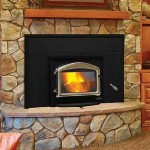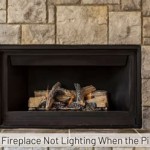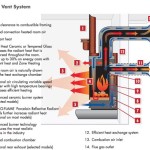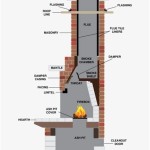Cost To Put In Brick Fireplace: A Comprehensive Guide
A brick fireplace can be a stunning and functional addition to any home, providing both warmth and aesthetic appeal. However, the cost of installing a brick fireplace can vary considerably depending on several factors. This article provides a detailed overview of the various components that influence the cost of installing a brick fireplace, allowing homeowners to make informed decisions and budget effectively.
Factors Influencing the Cost of a Brick Fireplace
The overall cost of installing a brick fireplace is not a fixed amount, but rather a composite figure determined by several key elements. Understanding these elements is crucial for accurate budgeting and avoiding unexpected expenses during the installation process.
Fireplace Type: The type of fireplace significantly impacts the cost. Traditional masonry fireplaces, built from the ground up, are generally the most expensive option due to the intensive labor and materials involved. Prefabricated fireplaces, also known as zero-clearance fireplaces, are less expensive as they are manufactured units that require less on-site construction. Electric fireplaces, while not technically brick fireplaces in the traditional sense, can be enclosed in brick surrounds for a similar aesthetic effect and are typically the least expensive option of the three.
Brick Type and Quantity: The specific type of brick selected for the fireplace surround and chimney will affect the overall material cost. Standard clay bricks are the most common and affordable, while specialized bricks, such as those with unique textures, colors, or antique finishes, can significantly increase the cost. The quantity of brick required is directly related to the size and design of the fireplace. A taller, wider fireplace will naturally require more bricks, increasing the material cost.
Chimney Construction: A chimney is an essential component of a traditional brick fireplace, providing a safe and effective means of venting smoke and combustion gases. The cost of chimney construction can vary depending on factors such as height, location (interior or exterior), and materials. A taller chimney will require more materials and labor, increasing the cost. Similarly, an exterior chimney may be more expensive to construct than an interior chimney due to accessibility challenges and weather considerations. The use of a prefabricated chimney system can sometimes reduce costs compared to a traditional brick chimney.
Firebox Construction: The firebox, the area where the fire is actually built, is another critical component. It must be constructed of fire-resistant materials to withstand the high temperatures generated by the fire. Firebricks are commonly used for lining the firebox, and their cost will contribute to the overall expense. The size and design of the firebox will also influence the material and labor costs.
Labor Costs: Labor costs represent a significant portion of the total cost of installing a brick fireplace. The complexity of the project, the experience of the mason or contractor, and the prevailing labor rates in the area all influence these costs. A complex fireplace design with intricate brickwork will require more skilled labor and time, resulting in higher labor costs. Obtaining multiple quotes from qualified contractors is essential to ensure a competitive price.
Permits and Inspections: Building permits are typically required for the installation of a brick fireplace to ensure compliance with local building codes and safety regulations. The cost of permits varies depending on the municipality. Inspections are also required at various stages of the construction process to verify that the work is being performed according to code. These fees can add to the overall cost of the project.
Additional Features and Finishes: Additional features, such as a mantel, hearth, or decorative brickwork, will add to the cost. A custom-designed mantel made from high-quality wood or stone can significantly increase the overall expense. Similarly, a large hearth made from granite or marble will be more expensive than a standard brick hearth. Decorative brickwork, such as intricate patterns or corbelling, requires more skilled labor and can also increase the cost.
Existing Structure Modifications: If the installation of the brick fireplace requires modifications to the existing structure of the home, such as reinforcing the floor to support the weight of the fireplace or altering the roof to accommodate the chimney, these modifications will add to the overall cost. Assessing the structural requirements is crucial before beginning the project to avoid unexpected expenses.
Typical Cost Breakdown
While the exact cost breakdown will vary depending on the specific factors outlined above, a general estimate can provide a helpful starting point for budgeting. The following breakdown assumes the installation of a traditional masonry brick fireplace with a standard chimney.
Materials: This category includes the cost of bricks, firebricks, mortar, chimney liner, flue, and any other necessary materials. Materials typically account for 30-40% of the total cost.
Labor: This category includes the cost of labor for the mason, contractor, and any other tradespeople involved in the project. Labor typically accounts for 40-50% of the total cost.
Permits and Inspections: This category includes the cost of building permits and inspection fees. Permits and inspections typically account for 5-10% of the total cost.
Additional Features and Finishes: This category includes the cost of the mantel, hearth, and any other decorative features. These features can add significantly to the cost, depending on the materials and design choices.
Contingency Fund: It is always advisable to include a contingency fund of 5-10% of the total estimated cost to cover any unexpected expenses that may arise during the project.
Based on these estimates, the cost of installing a traditional masonry brick fireplace can range from $5,000 to $20,000 or more, depending on the size, complexity, and materials used. Prefabricated brick fireplaces typically range from $3,000 to $10,000, including installation. Electric fireplaces with brick surrounds can be installed for as little as $1,500 to $5,000.
Cost-Saving Strategies
While a brick fireplace is a significant investment, there are several strategies homeowners can employ to potentially reduce the overall cost without compromising on quality or safety.
Choose Standard Materials: Opting for standard clay bricks and readily available materials can significantly reduce material costs compared to specialized or custom-made options. While specialty bricks can add unique character, they often come with a premium price tag.
Simplify the Design: A complex fireplace design with intricate brickwork and multiple features will naturally increase the cost. Simplifying the design and opting for a more straightforward approach can save on both labor and materials.
Obtain Multiple Quotes: Getting quotes from several qualified contractors is crucial for ensuring a competitive price. Compare the quotes carefully, paying attention to the details of what is included and excluded. Don't necessarily choose the lowest bid, as it may indicate inferior workmanship or materials.
Consider a Prefabricated Fireplace: Prefabricated fireplaces are typically less expensive than traditional masonry fireplaces due to their standardized construction and reduced labor requirements. If a traditional masonry fireplace is not essential, a prefabricated option can offer a cost-effective alternative.
DIY Components (with Caution): Some homeowners may consider tackling certain aspects of the installation themselves, such as demolition or finishing work, to save on labor costs. However, it is important to be realistic about one's skills and experience. Incorrectly performed work can lead to safety hazards or costly repairs. Tasks involving structural elements, gas lines, or electrical wiring should always be left to qualified professionals.
Timing Considerations: Demand for masonry work can fluctuate depending on the season. Scheduling the installation during the off-season (typically late fall or winter) may result in lower labor costs due to reduced demand.
Negotiate with Suppliers: In some cases, it may be possible to negotiate discounts with brick suppliers, especially if purchasing a large quantity of bricks. Asking about bulk discounts or special promotions can potentially save money on materials.
Installing a brick fireplace is a project that requires careful planning and budgeting. By understanding the various factors that influence the cost and exploring potential cost-saving strategies, homeowners can make informed decisions and create a beautiful and functional fireplace that enhances their home's value and comfort. The cost will vary depending on the choices made and the specifics of the site, so proper research of all options will make deciding on the right fit much easier for the homeowner.

Fixr Com Cost To Install A Fireplace Build

Fixr Com Cost To Install A Fireplace Build

Fixr Com Brick Vs Stone Fireplace Pros Cons Comparisons And Costs

How Much Does Fireplace Installation Cost 2024 Data Angi

Fireplace Installation Cost 2024 Gas Wood Burning Electric

How Much Does A Fireplace Remodel Cost 2024 Data Angi

How To Plaster A Brick Fireplace So Much Better With Age

How To Install Thin Brick Veneers On Your Fireplace

Diy Electric Fireplace Full Hearted Home

Diy Faux Fireplace For Under 600 The Big Reveal Bless Er House
Related Posts








